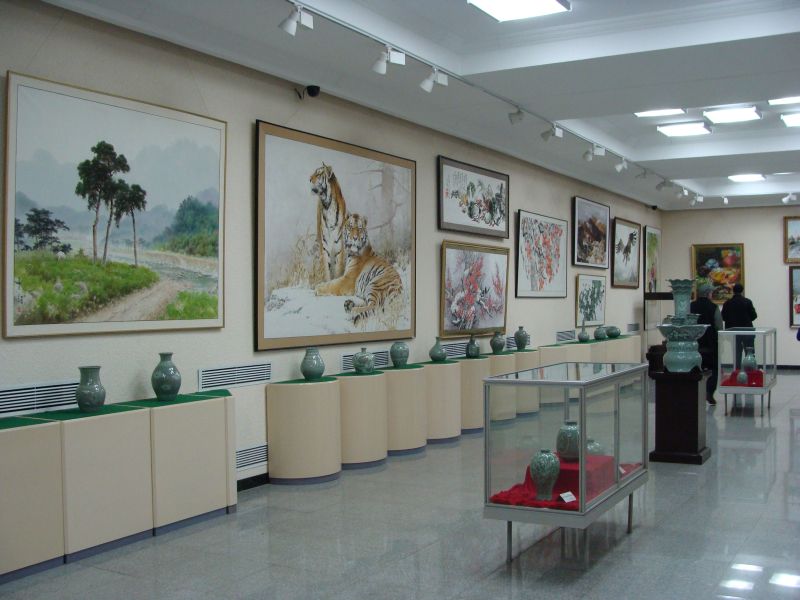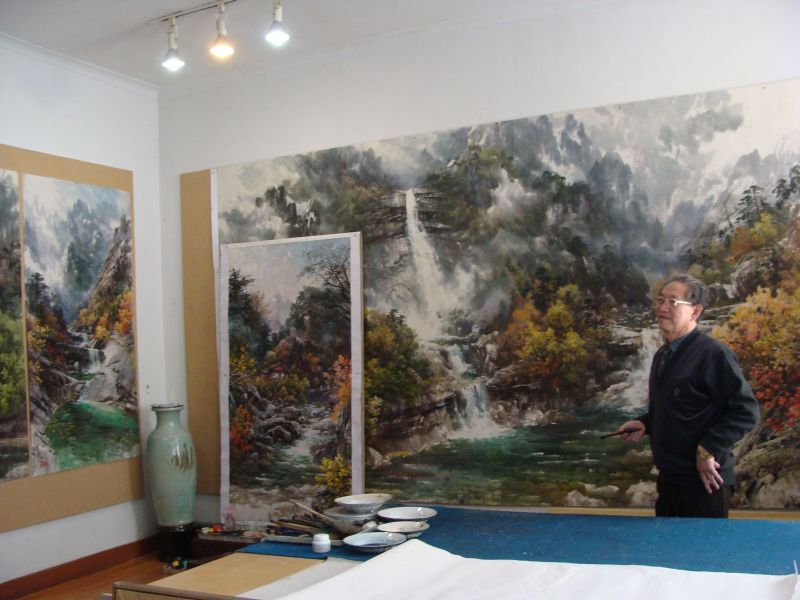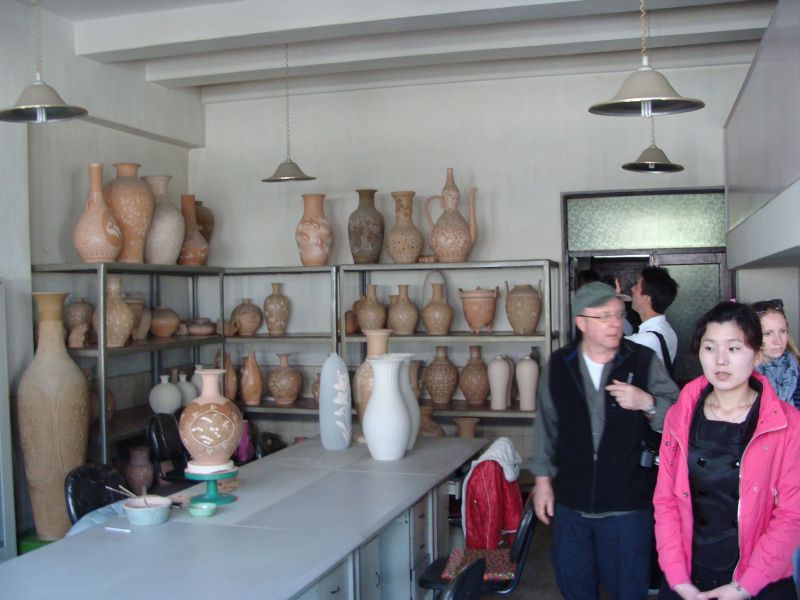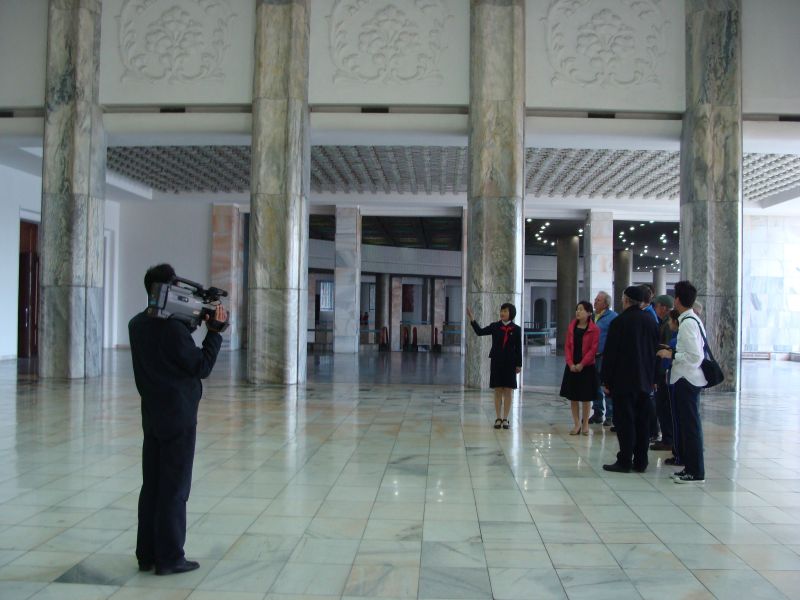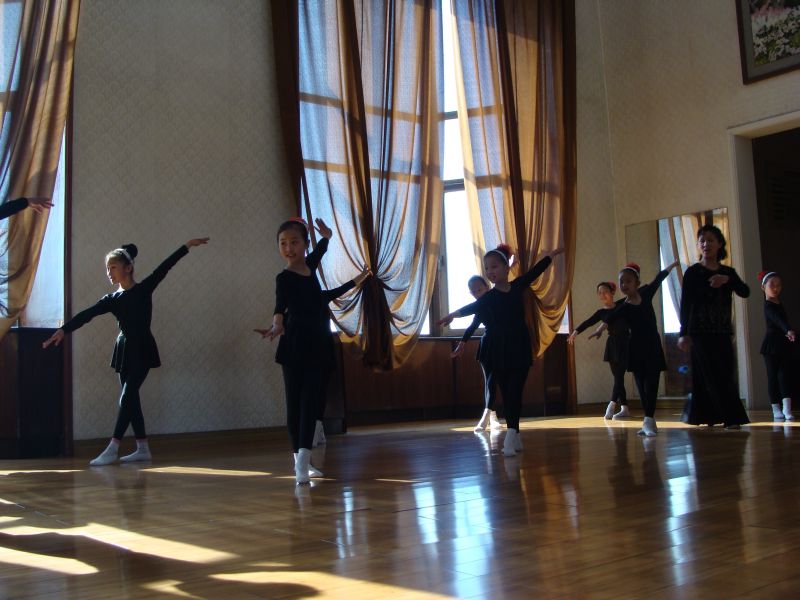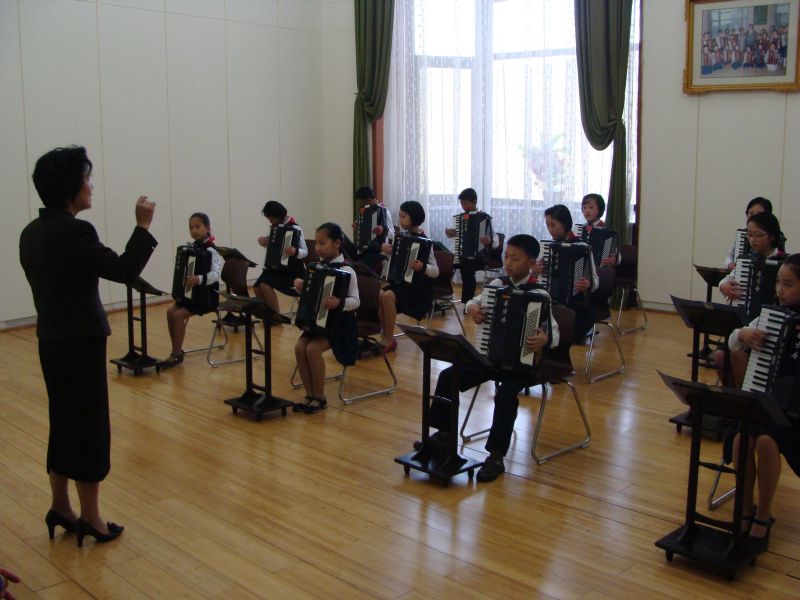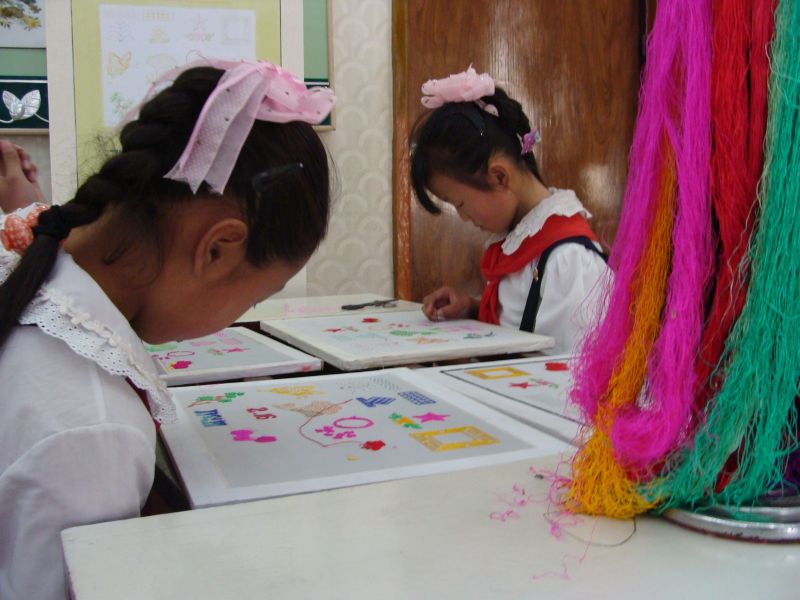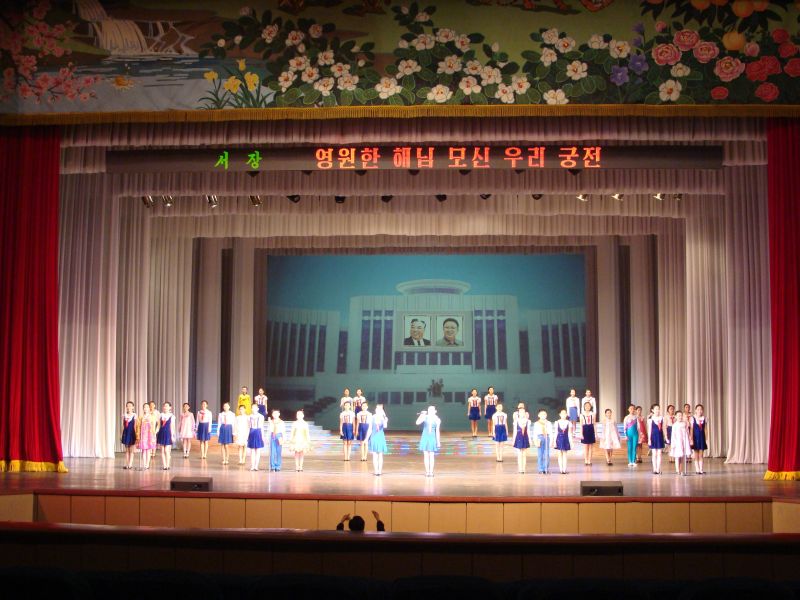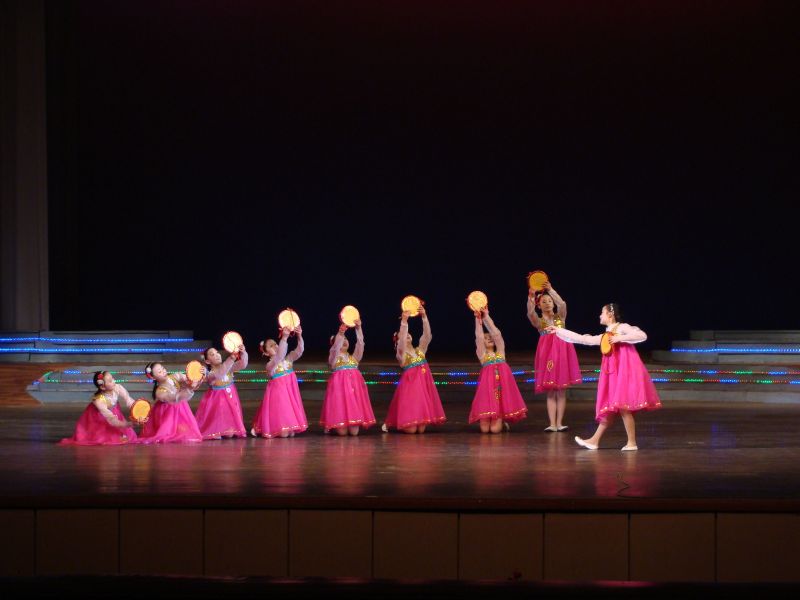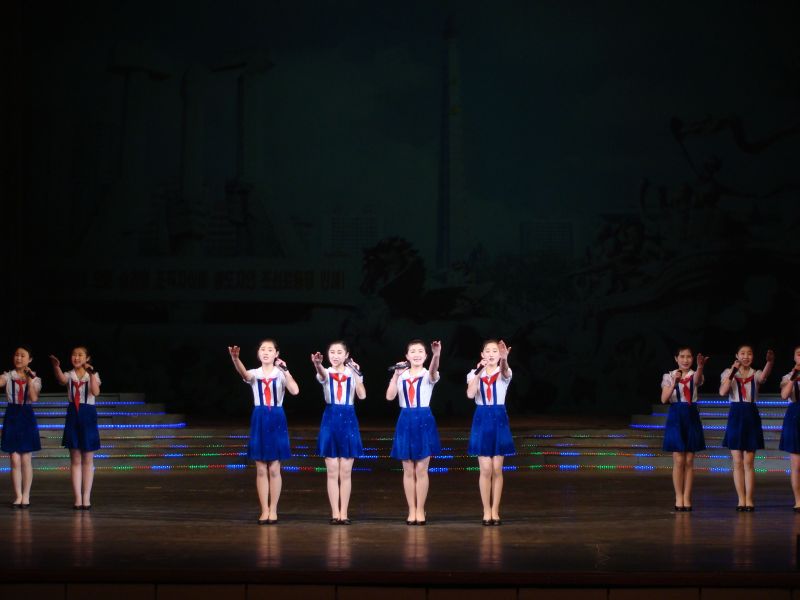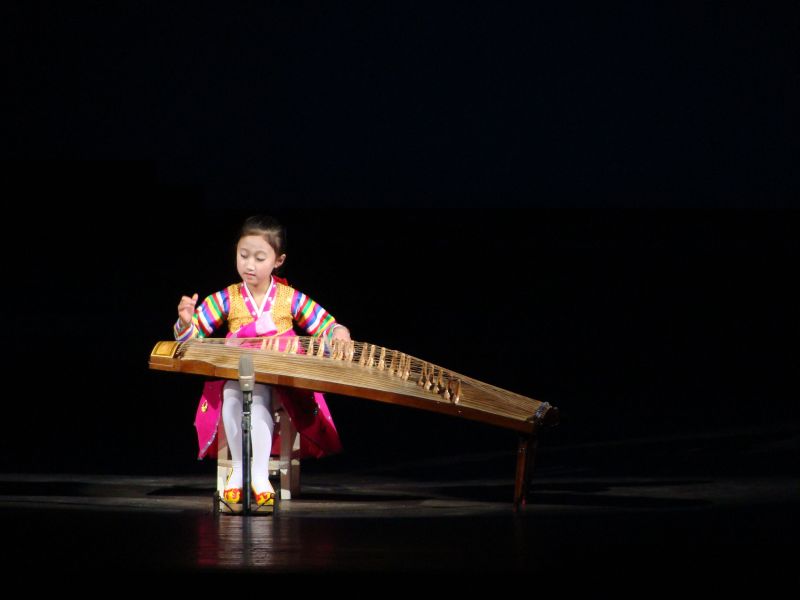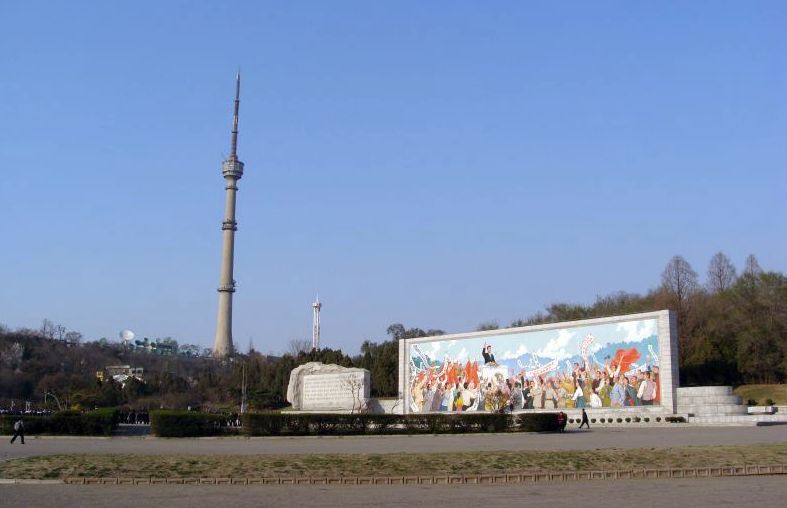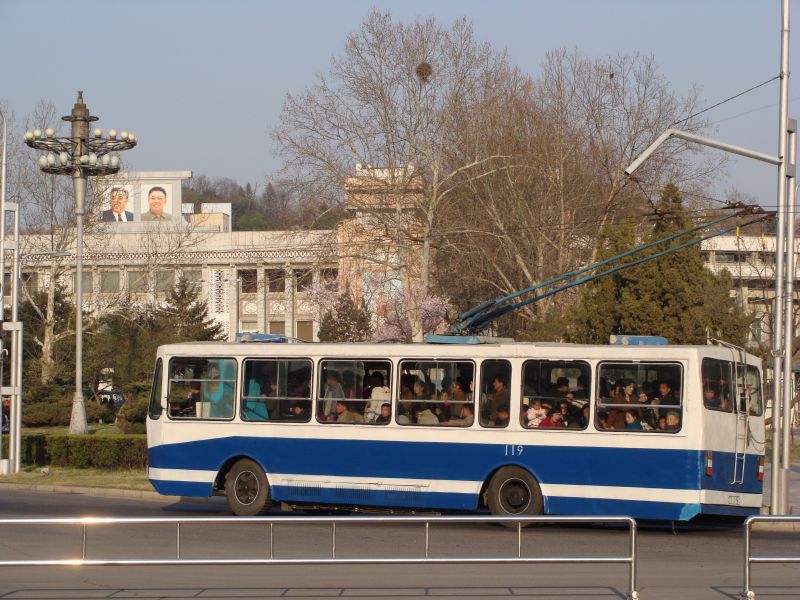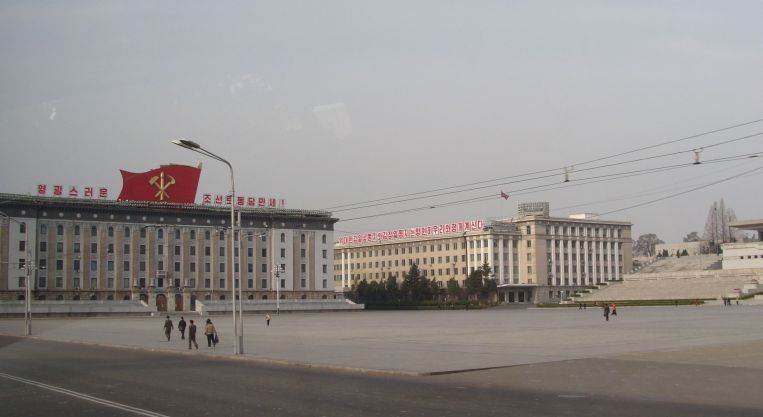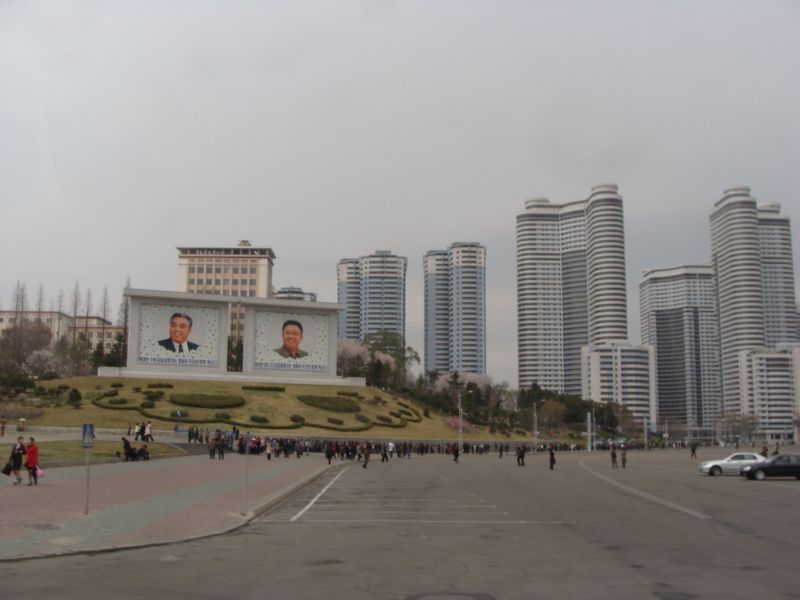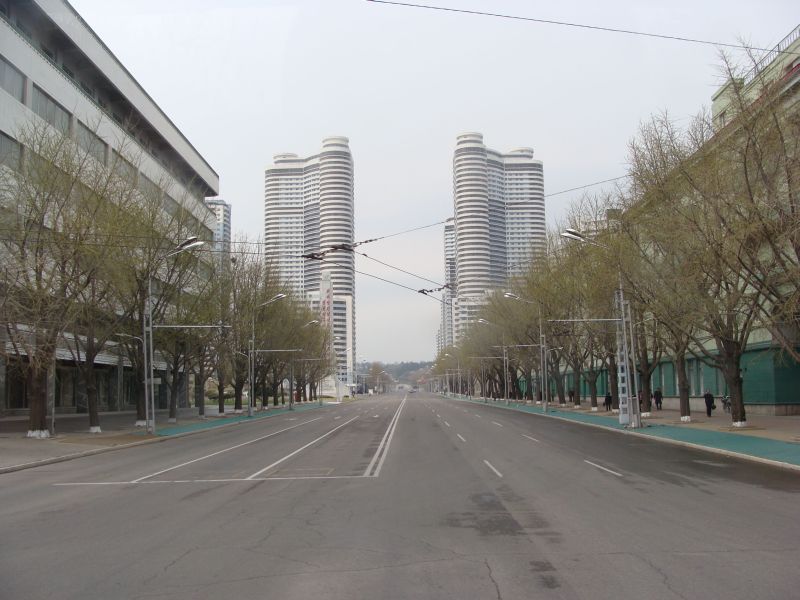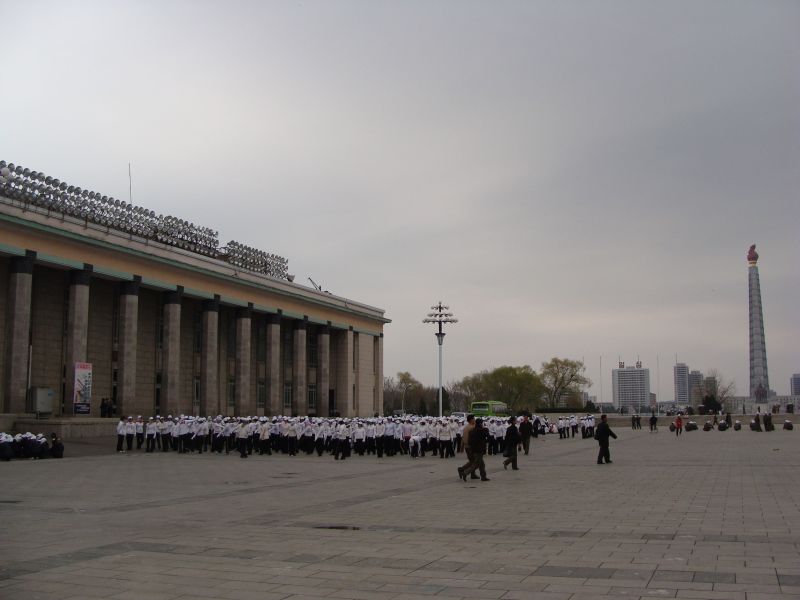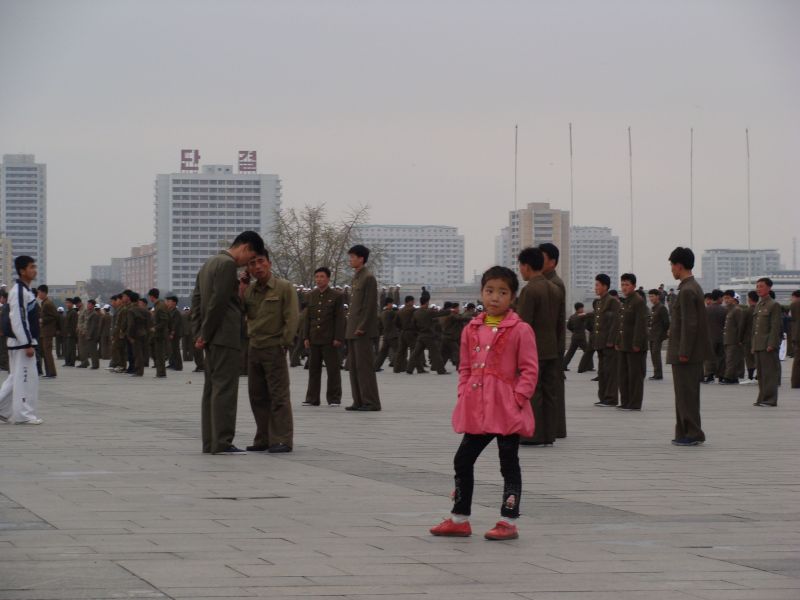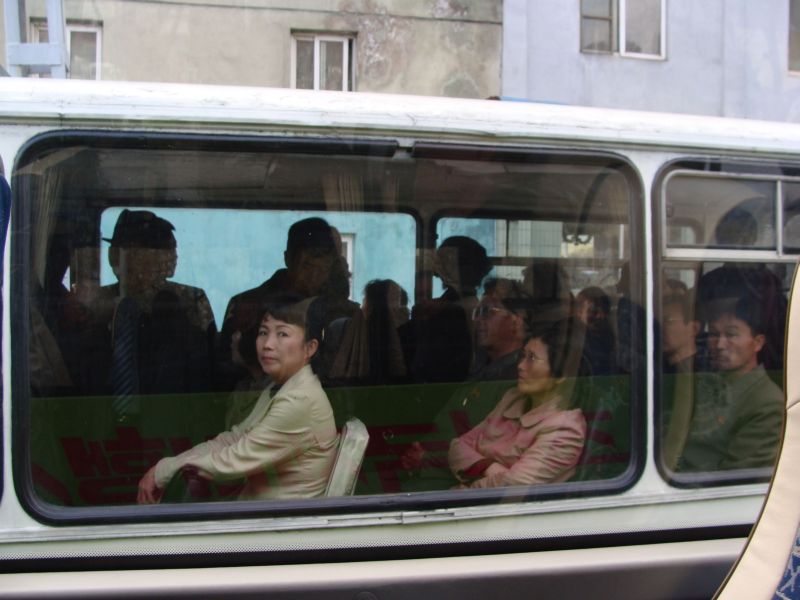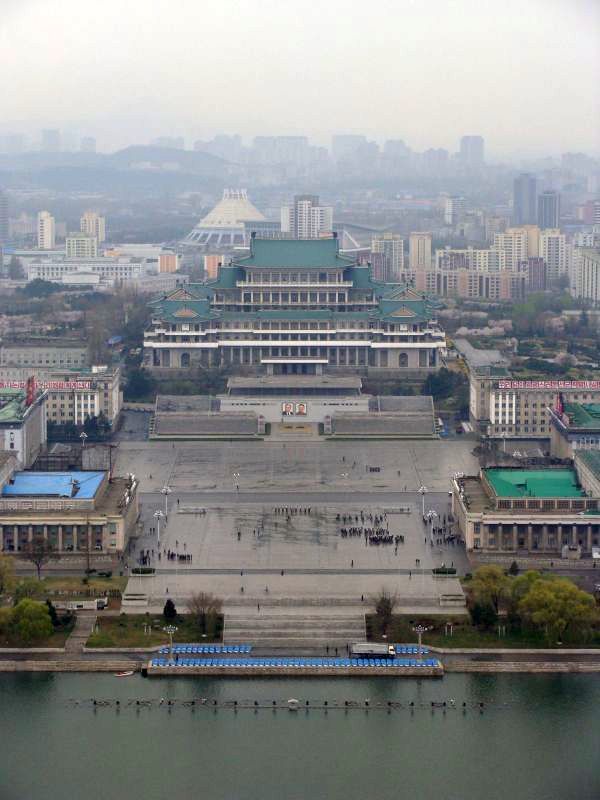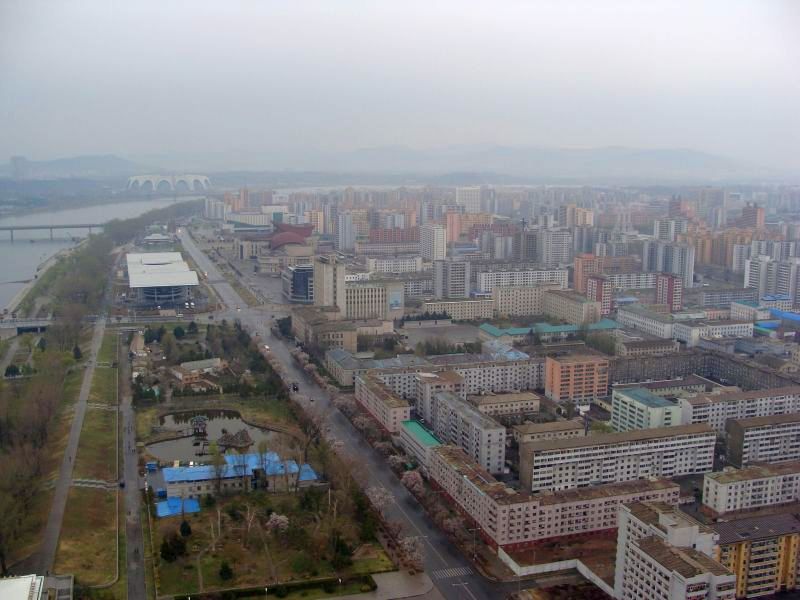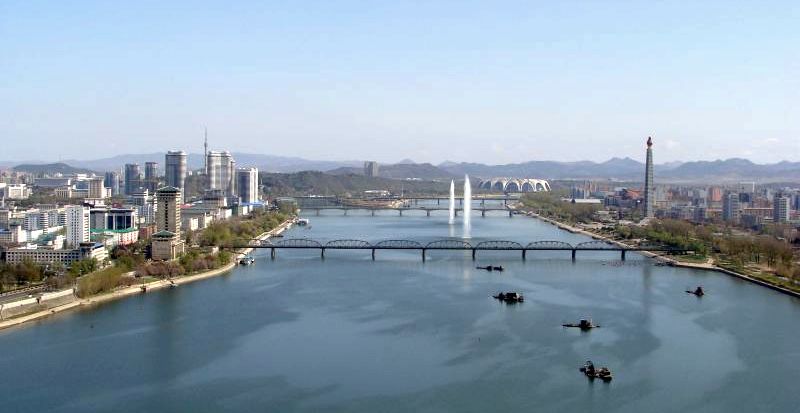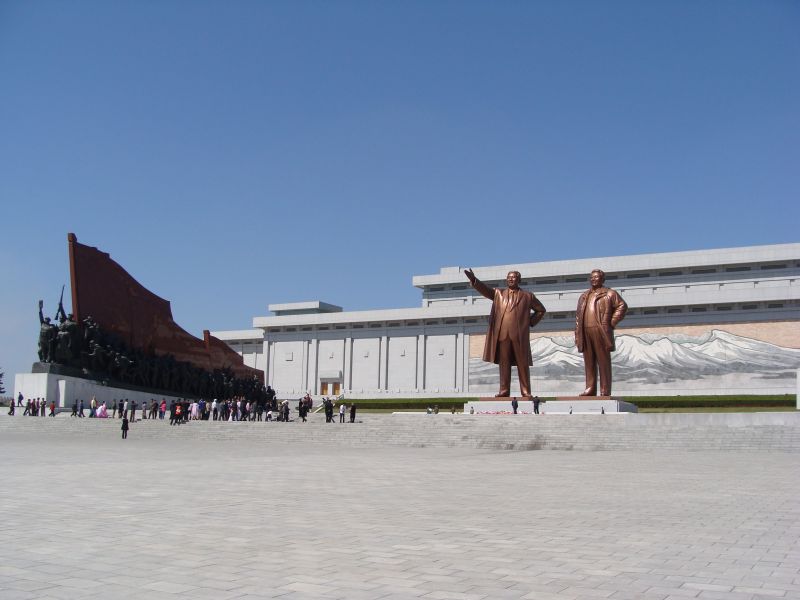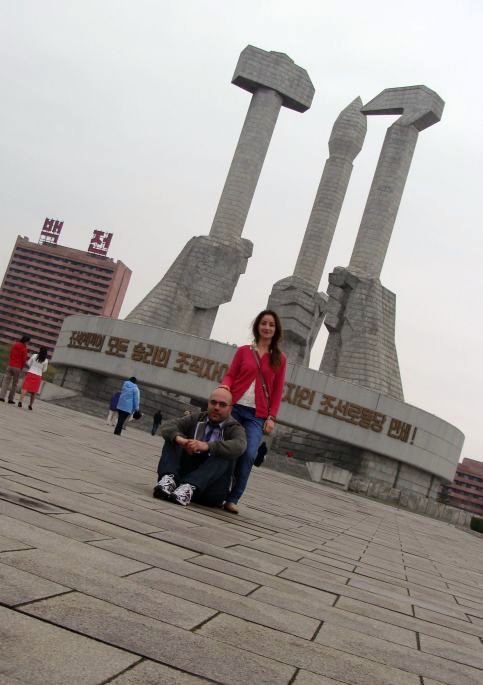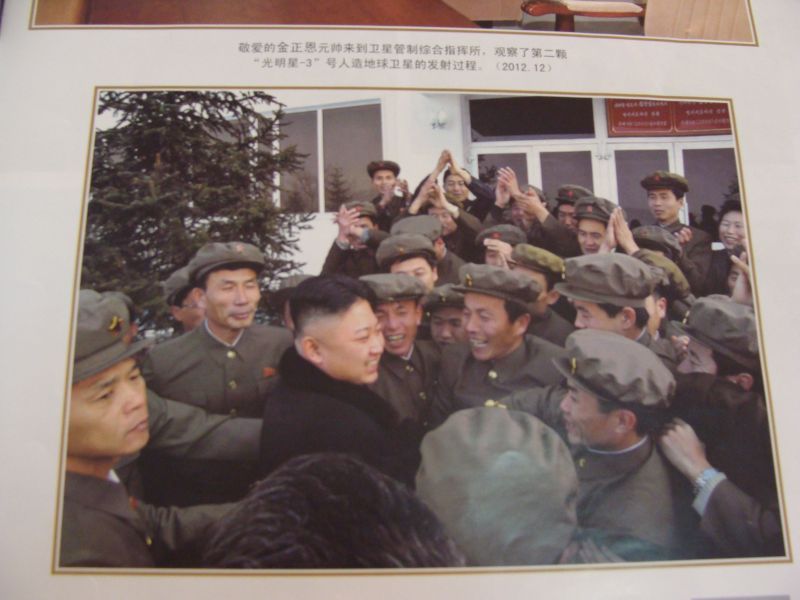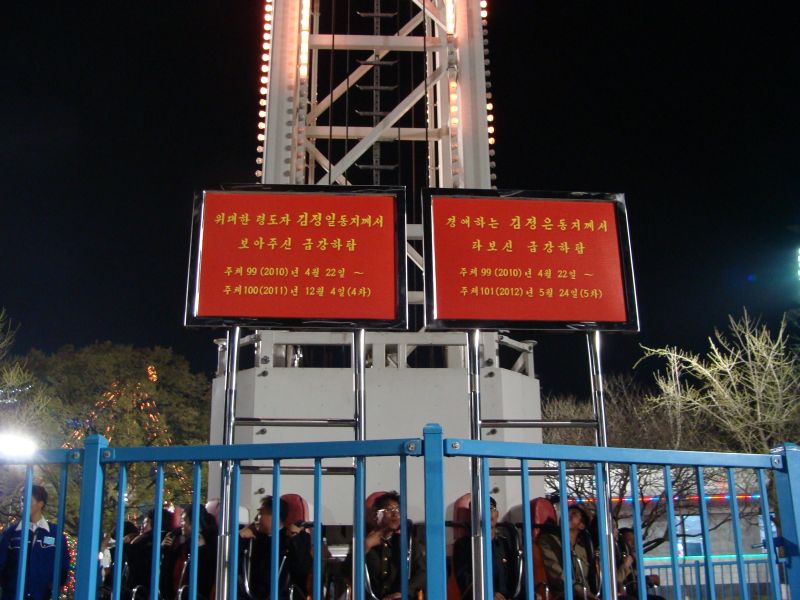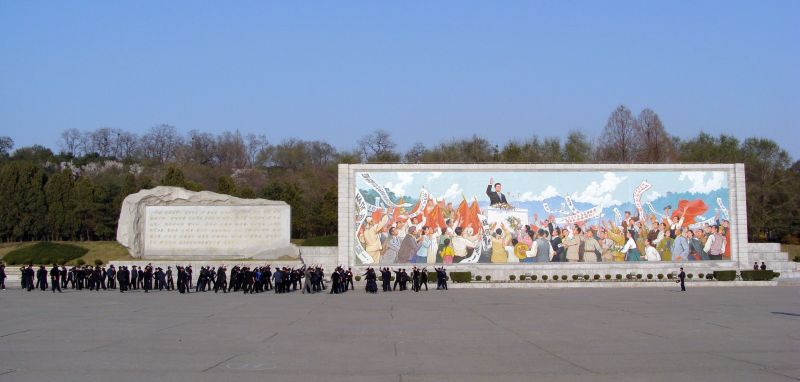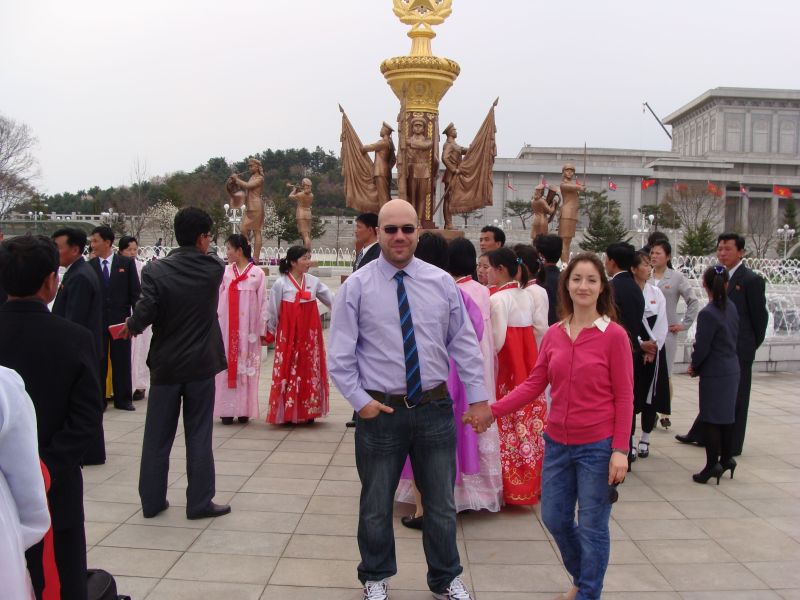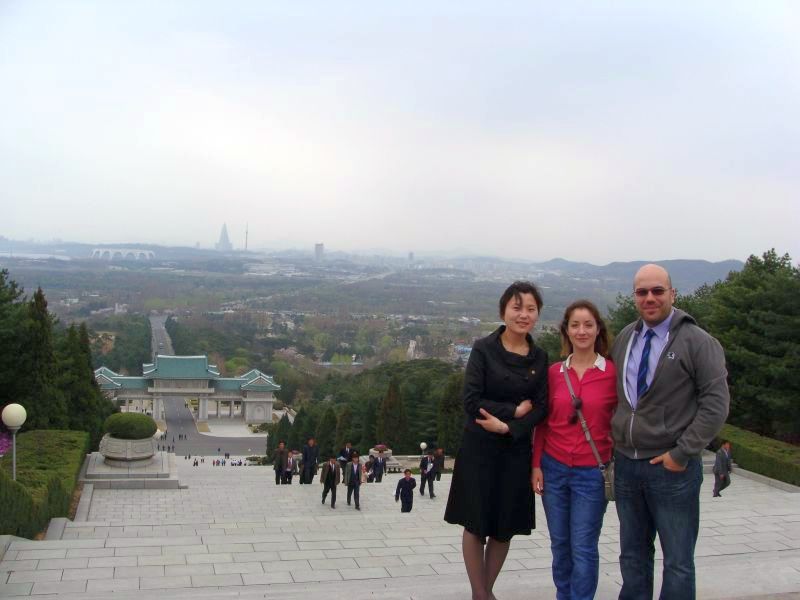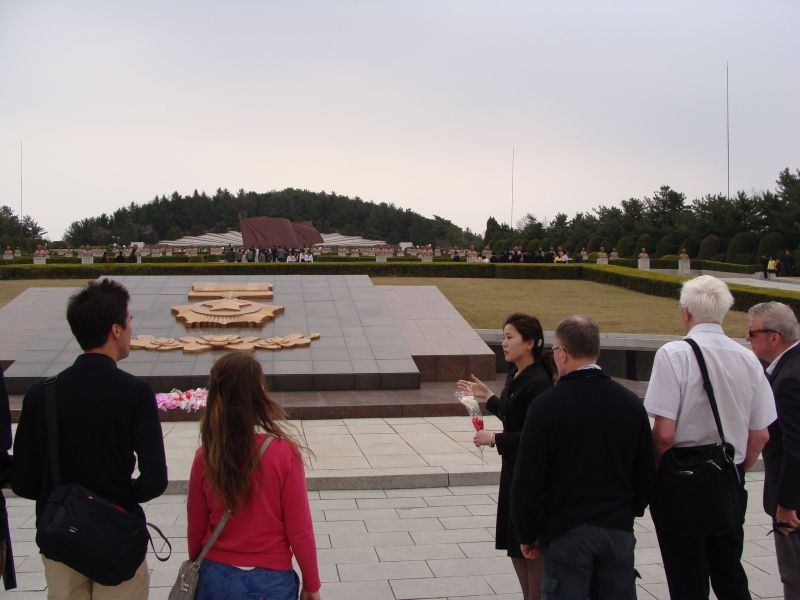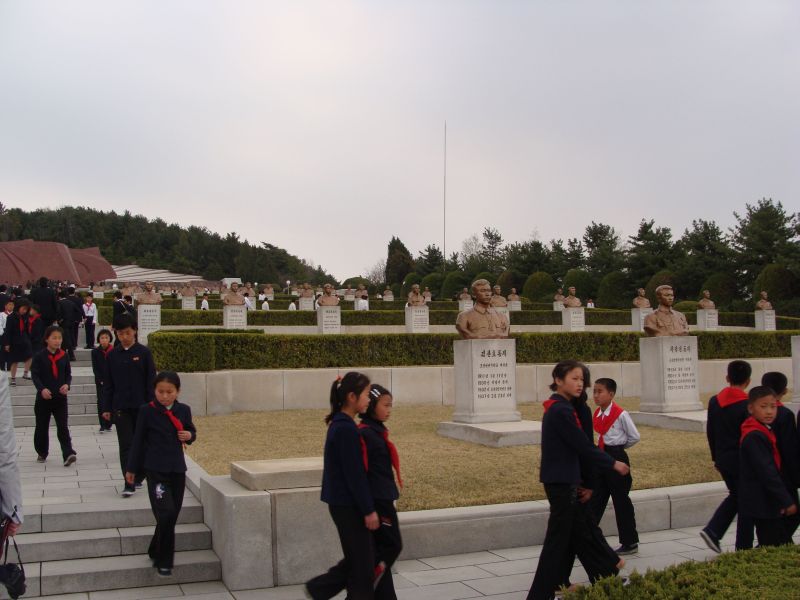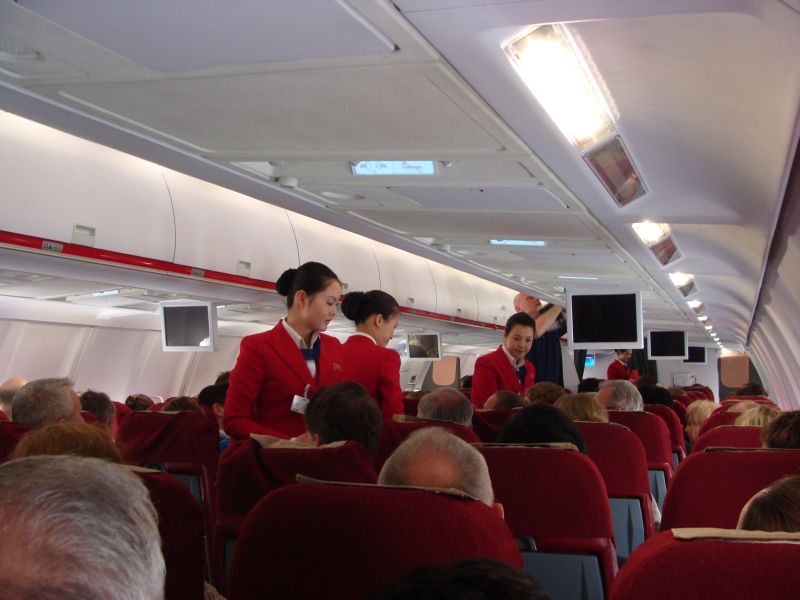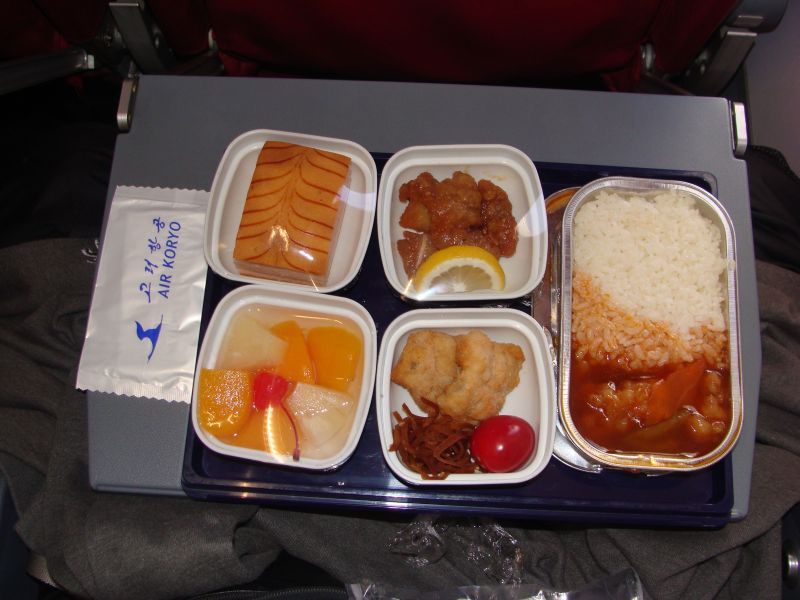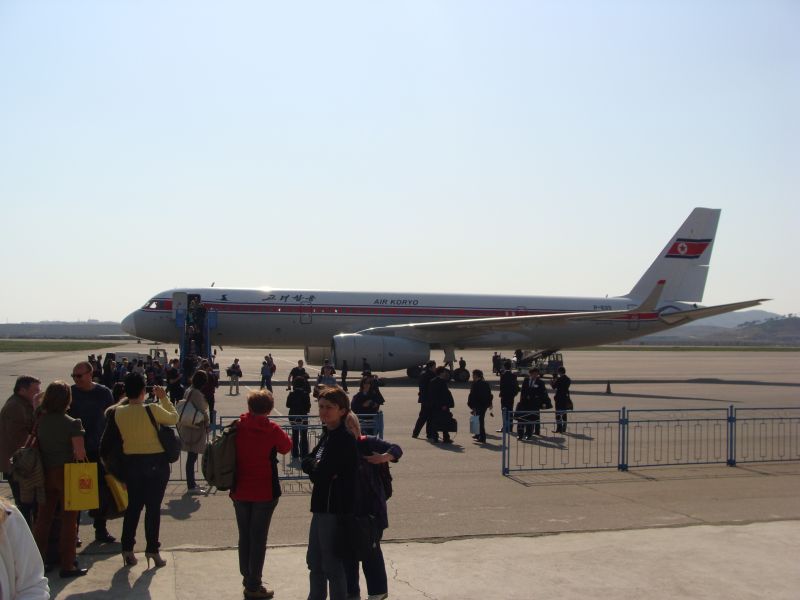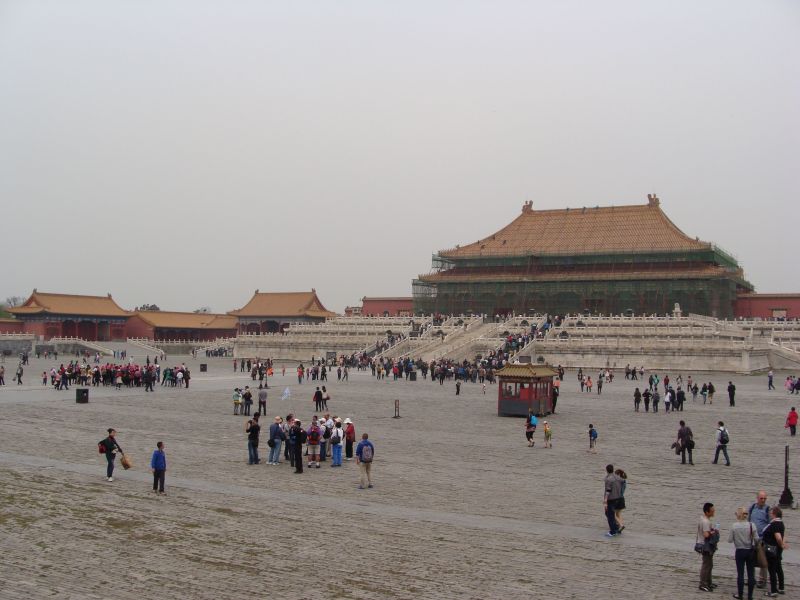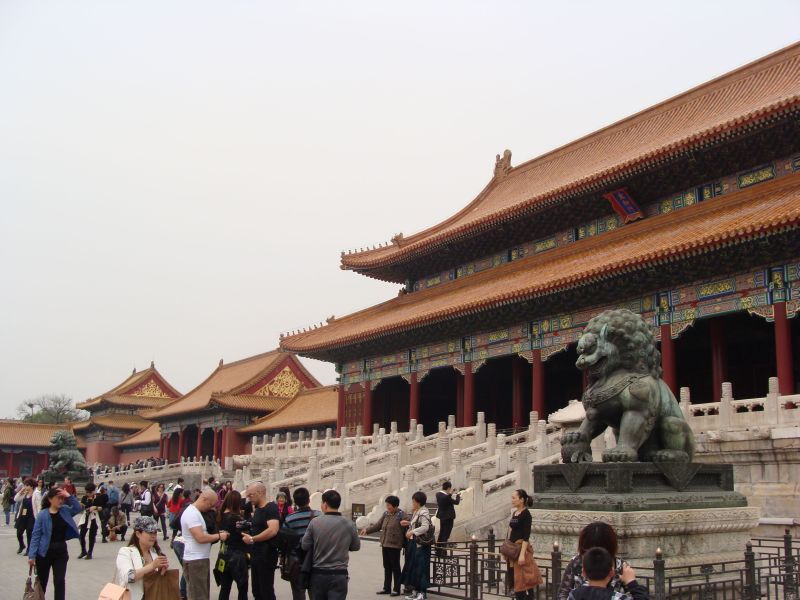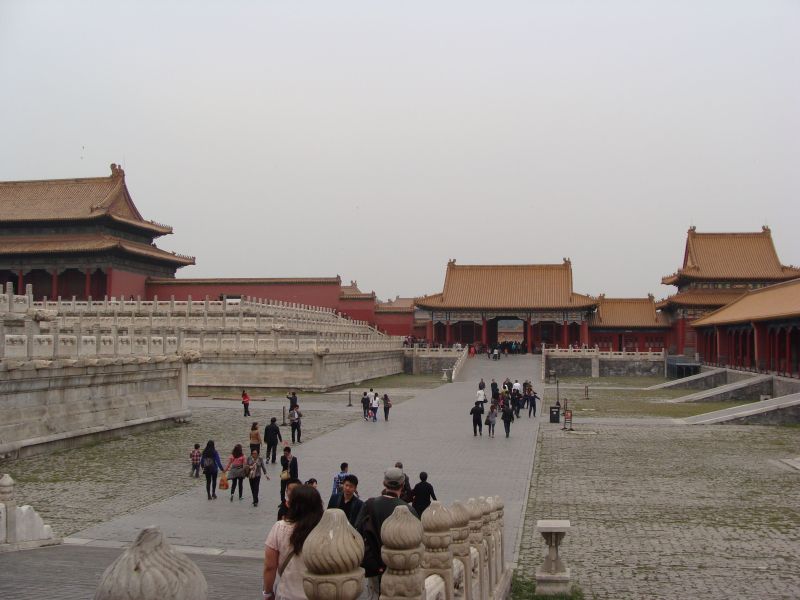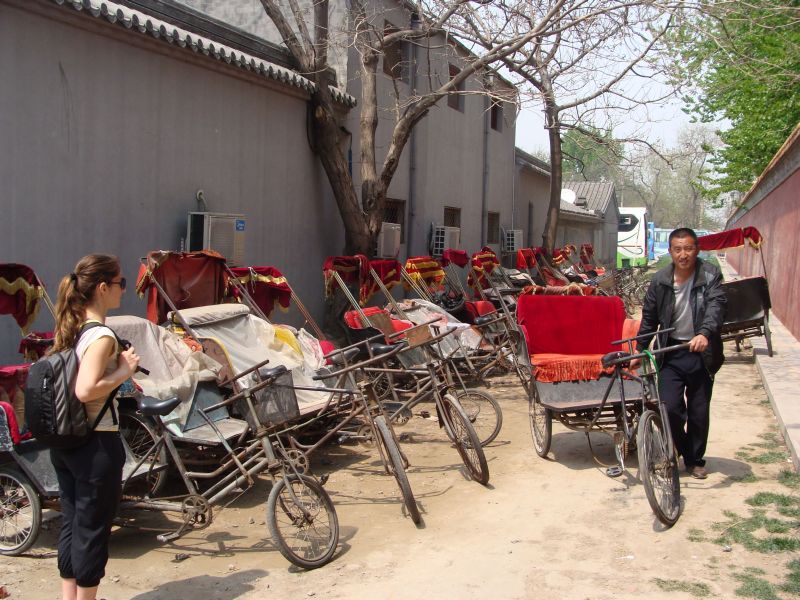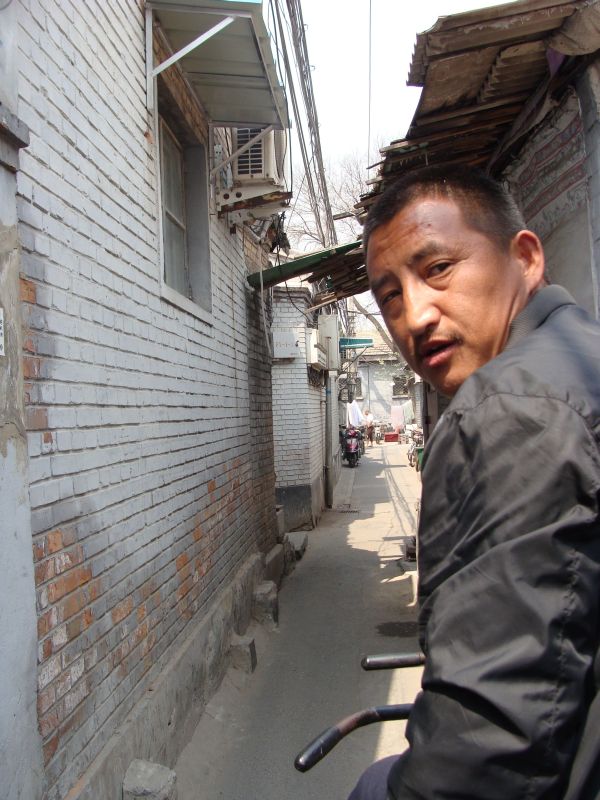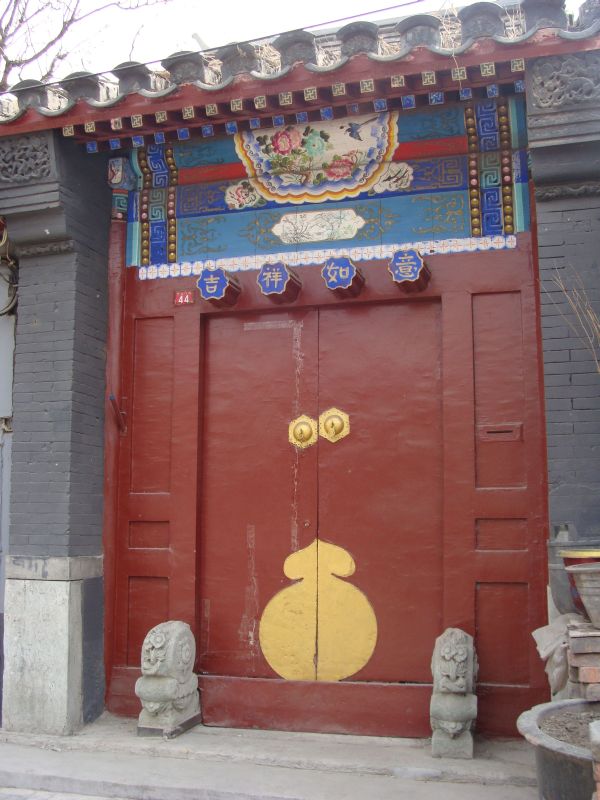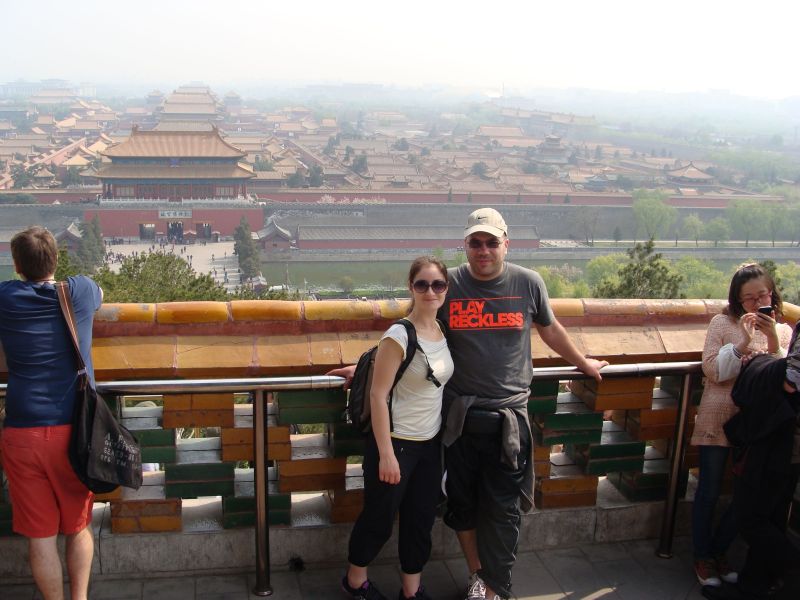Pyongyang
Not much is today left from pre war Pyongyang because it was razed by US carpet bombing during the 1950-1953 war. It was quickly rebuilt afterwads with soviet aid in socialist realism style, with wide avenues, massive buildings and somptuous art works. It was completely forbiden to take close pictures of the citizens or through the store windows, but I could not resist doing it. We were told that walking on the city streets (even accompanied by guides, as we were) was a recent freedom.
Private vehicle ownership is uncommon so the streets are pretty empty. There is wide public transit coverage but many people walk. Therefore the city is unusually quiet and the air is very clean. Koreans seem pretty concerned with dust and I’ve seen city employees with little brushes removing debris from the cracks in the pavement. Flowers, trees and grass all around complete the most tranquil urban landscape we’ve seen so far.
There is an evident lack of consumer goods as most stores we’ve seen were empty but people told me the overall economical condition has been improving steadily during the past 2 years. The Koreans call the period after 1994 “the national disaster” blamed on the fall of socialist system in the Eastern Europe as well as abnormally bad weather.
Government propaganda
Getting in
At this moment, most tourists can only go inside the DPRK as part of a guided tour. We picked Koryo tours, a travel company with (mainly) British staff based in Beijing. They booked the flight tickets, hotel, obtained visas and took care of all the details.
We departed from Beijing aboard a Tupolev 204 flown by Air Koryo, DPRK’s flight carrier (which was parked side by side at the gate with a South Korean counterpart). Service was good and food, although not fancy, tasted better than most other food we had aboard planes.
The terminal building in Pyongyang was basic but enough for the light traffic. We cleared the immigration and customs without issues and without luggage search, but we had to declare all electronic devices.
The group was formed by 20 tourists, mostly from UK, Australia and Germany. We were accompanied by 2 guides from Beijing and the following Korean staff: 2 senior guides, 2 junior guides, 2 drivers, 1 camera operator and 2 more persons that appeared to be in charge with general oversight. At the beginning they were very tense but after 1-2 days everybody was friendly and relaxed.
Beijing
We arrived recently in Beijing and we had one day before departing to North Korea. I felt incapacitated without wheels so I decided to try to rent some bikes from the Beijing bike sharing project. Since we were non residents the situation was a bit more complicated. Furthermore, after some 2 hours of trying we had to give up when we understood that in between the bike rental place and the metro station across the street (the place where we purchased the required metro cards) there was a district boundary and the cards weren’t going to work at that particular rental center. OK… we took the train and after sweating for some 30 minutes we arrived at the Forbidden City. In our opinion the fame is well ahead of the actual value of this objective. Perhaps, after seeing so many exciting sites, the average ones can’t impress us anymore. Anyways, the compound consists of a few similar looking buildings that housed the Chinese emperor from around 1420 until 1925, during the Ming and Qing dynasties.
After that we took a rickshaw ride in narrow alleys in Hutong. In the gate picture, the 4 things above the gate show the social rank of the owner while the 2 rock sculptures on the sides show his employment.
Last thing we went on a nearby hill to have a better view of the palace.
